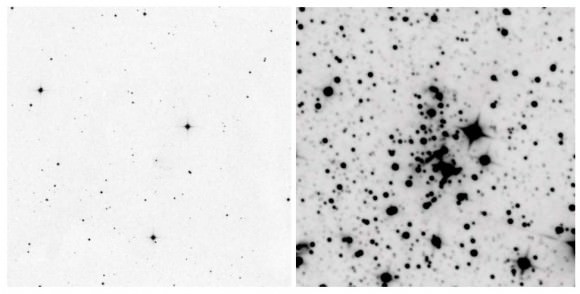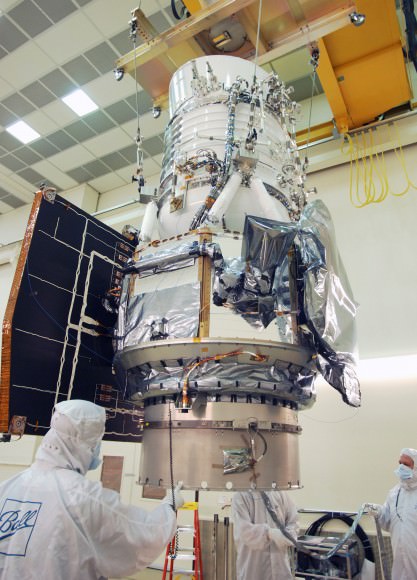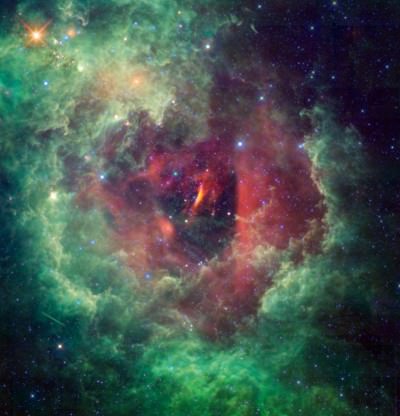Brazilian astronomers have discovered some 300+ star clusters that were largely overlooked owing to sizable obscuration by dust. The astronomers, from the Universidade Federal do Rio Grande do Sul, used data obtained by NASA’s WISE (Wide-Field Infrared Survey Explorer) space telescope to detect the clusters.
“WISE is a powerful tool to probe … young clusters throughout the Galaxy”, remarked the group. The clusters discovered were previously overlooked because the constituent stars are deeply embedded in their parent molecular cloud, and are encompassed by dust. Stars and star clusters can emerge from such environments.
The group added that, “The present catalog of new clusters will certainly become a major source for future studies of star cluster formation.” Indeed, WISE is well-suited to identify new stars and their host clusters because infrared radiation is less sensitive to dust obscuration. The infrared part of the electromagnetic spectrum is sampled by WISE.

Historically, new star clusters were often identified while inspecting photographic plates imaged at (or near) visible wavelengths (i.e., the same wavelengths sampled by the eye). Young embedded clusters were consequently under-sampled since the amount of obscuration by dust is wavelength dependent. As indicated in the figure above, the infrared observations penetrate the dust by comparison to optical observations.
The latest generation of infrared survey telescopes (e.g., Spitzer and WISE) are thus excellent instruments for detecting clusters embedded in their parent cloud, or hidden from detection because of dust lying along the sight-line. The team notes that, “The Galaxy appears to contain 100000 open clusters, but only some 2000 have established astrophysical parameters.” It is hoped that continued investigations using WISE and Spitzer will help astronomers minimize that gap.
The discoveries are described in a new study by D. Camargo, E. Bica, and C. Bonatto that is entitled “New Glactic embedded cluster and candidates from a WISE survey“. The study has been accepted for publication, and will appear in a forthcoming issue of the journal New Astronomy. For more information on Galactic star clusters see the Dias et al. catalog, the WEBDA catalog, or the Star Clusters Young & Old Newsletter. Thanks to K. MacLeod for the title suggestion.



A (non-paywalled) preprint of “New Galactic embedded clusters and candidates from a WISE Survey” is available here: http://arxiv.org/abs/1406.3099